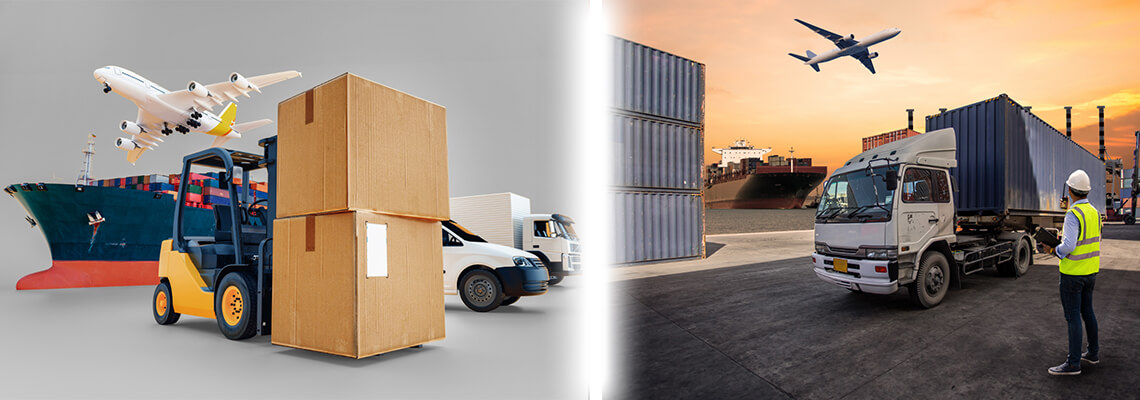 23 Feb 2022
23 Feb 2022
Know the Major Differences between Transport and Logistics
Logistics for transport is a vast term that brings many thoughts regarding transporting goods from one place to another. For many, the word “supply chain management” conjures up images of logistics and distribution. The supply chain does include this, but it’s only a small part. Supply chain management is sub-divided into two essential components:
- Material handling involves sourcing or material availability and manufacturing of the products or goods.
- Distribution is about transferring the goods from producers to distributors and users.
While both transport and logistics are critical for distributing commodities and goods, their focuses are somewhat different. Contrarily, logistics is responsible for coordinating and maintaining the transportation supply chain of commodities from producers to consumers.
There are similarities between transport and logistics management in that both focus on moving goods and services from one location to another. Besides moving goods, logistics is a whole field in itself.
You must understand the differences between transport and logistics management, even though they are closely linked—transport vs. logistics: What you need to know about these two fields.
What is Transportation And Logistics?
Logistics mainly depends upon the transportation procedure. The modes of transportation, including sea, road, and air, are the primary emphasis of this study. Infrastructure, vehicles, and operations make up the three pillars of transportation services.
Transportation is an essential factor when preparing a cargo. It’s necessary to figure out prices, how critical it is to get the cargo to the end-user within a specific timeframe, and how much the goods are worth. In addition to this, it is also necessary to figure out the size, weight, and dimensions of a product.
Logistics is the process of obtaining, transporting, and utilizing products and commodities to meet specific requirements and deliver them to a final recipient. Studying transport and logistics management involves designing and implementing solutions for the most efficient and effective storage and movement of goods.
Services and other data are delivered to customers through logistics channels. An object’s path is traced from its source to its final destination.
Identifying the Difference between Transport and Logistics
After reading the definitions above, these two notions’ differences are now crystal clear:
- Logistics is the mechanism by which products are classified, transported, and distributed to their final destination.
- Moving anything from its present location to a different one is known as transportation. To guarantee that the product arrives at its destination in perfect condition and on schedule, every logistics element must be considered.
- When moving items via distribution channels, transportation isn’t involved in logistics. That task falls to the logistics department.
- When it comes to purchasing, manufacturing, and distributing goods, logistics services were a key component.
- In contrast, transportation focuses on moving people and products, and goods from one location to another.
- Transportation focuses solely on delivering the goods from the source to the intended recipient. It’s a systematic method of picking up the items, categorizing them based on where they’ll be shipped, and storing them till they’re ready to be picked up again.
- Transportation determines the efficiency of moving things during allocation, including inventory, storing, supply chain, and transportation. At the same time, the classification of goods and services is known as distribution.
- Import/export restrictions, freight damage claims, negotiating and coordinating with suppliers/partners/vendors, and risk mitigation are a few issues that logistics executives must address.
- Transportation serves as a vehicle or medium for carrying out a predetermined strategy in logistics management.
- Logistics refers to the planning process when moving people and things throughout an organization. In contrast, transportation is transferring people or items from one destination to another. This is why transportation is vital in logistics.
- Each new technique for increasing productivity necessitates the integration of various analyses. Managing the warehouse most appropriately is the fundamental priority to provide effective logistic management services.
- New technologies and innovations must be adapted to improve transportation and distribution services.
